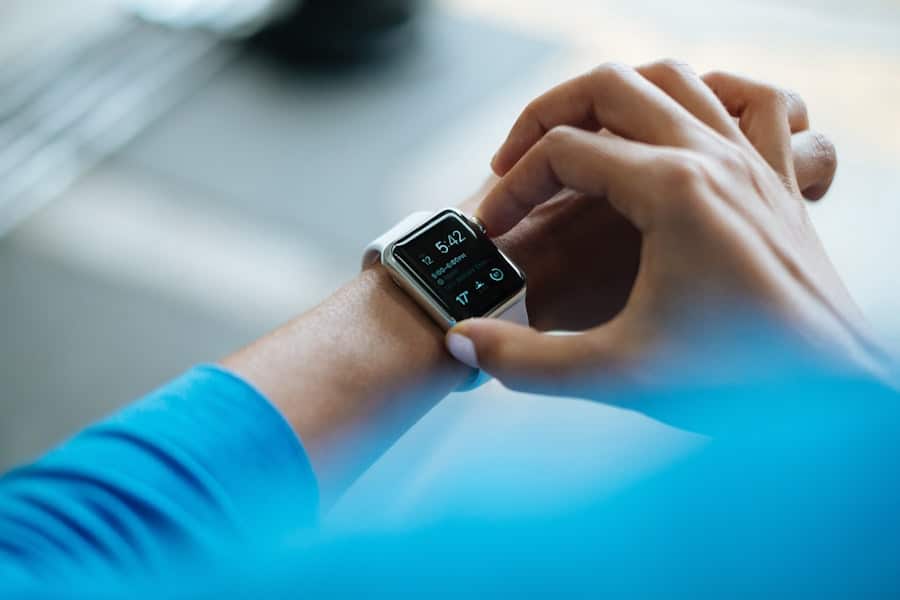Wearable devices have emerged as a transformative force in the realm of health and fitness, revolutionizing how individuals monitor their physical well-being. These compact gadgets, often worn on the wrist or as clothing accessories, are equipped with advanced sensors and technology that allow users to track various health metrics in real-time. From smartwatches to fitness bands, these devices have become ubiquitous, appealing to a wide demographic that ranges from casual fitness enthusiasts to serious athletes.
The integration of technology into personal health management has not only made tracking easier but has also fostered a culture of self-awareness and proactive health management. The rise of wearable technology can be attributed to several factors, including advancements in sensor technology, increased smartphone connectivity, and a growing public interest in health and wellness. As consumers become more health-conscious, the demand for tools that facilitate better lifestyle choices has surged.
Wearable devices provide an accessible means for individuals to gain insights into their daily activities, sleep patterns, and overall health metrics. This shift towards self-monitoring is not merely a trend; it represents a fundamental change in how people engage with their health, empowering them to make informed decisions based on real-time data.
Key Takeaways
- Wearable devices are becoming increasingly popular for tracking physical activity, monitoring nutrition, and setting weight loss goals.
- These devices can track physical activity and exercise, providing valuable data for users to monitor their progress and make adjustments to their fitness routines.
- Wearable devices can also monitor caloric intake and nutrition, helping users make more informed decisions about their diet and overall health.
- Setting and tracking weight loss goals is made easier with the use of wearable devices, which can provide real-time feedback and motivation to help users stay on track.
- Wearable devices also offer the benefit of connecting with social support and accountability, as well as integrating with health apps and programs to provide a comprehensive approach to health and wellness.
- However, potential challenges and considerations include accuracy of data, privacy concerns, and the need for user education and awareness when using wearable devices for health and fitness tracking.
Tracking Physical Activity and Exercise
Tracking Physical Activity
Most wearable devices come equipped with accelerometers and gyroscopes that measure movement, allowing users to monitor their steps, distance traveled, and even the intensity of their workouts. For instance, devices like the Fitbit Charge series or the Apple Watch can automatically detect different types of physical activities, such as running, cycling, or swimming, providing users with detailed statistics about their performance.
Setting and Achieving Fitness Goals
This level of tracking not only helps individuals stay accountable but also encourages them to set and achieve personal fitness goals. Moreover, the data collected by these devices can be invaluable for understanding one’s physical capabilities and limitations. For example, a runner might use a wearable to analyze their pace over time, identifying trends that indicate improvements or areas needing attention.
Optimizing Workouts
This feedback loop can be particularly motivating; seeing tangible progress can inspire users to push themselves further. Additionally, many wearables offer features like heart rate monitoring during exercise, which can help users optimize their workouts by ensuring they are training within their target heart rate zones. This capability allows for a more tailored approach to fitness, enabling individuals to maximize their efforts based on scientific principles.
Monitoring Caloric Intake and Nutrition
In addition to tracking physical activity, many wearable devices now incorporate features that allow users to monitor their caloric intake and nutritional habits. This integration is crucial for individuals looking to manage their weight or improve their overall health. Some wearables sync with nutrition-tracking apps or have built-in food logging capabilities that enable users to input their meals and snacks throughout the day.
For example, devices like the Garmin Venu series can connect with MyFitnessPal, allowing users to seamlessly track both exercise and dietary intake in one place. The ability to monitor caloric intake provides users with a comprehensive view of their energy balance—calories consumed versus calories burned—which is essential for effective weight management. By understanding how their dietary choices impact their overall caloric intake, individuals can make more informed decisions about what they eat.
For instance, if a user notices that they are consistently exceeding their caloric goals despite regular exercise, they may choose to adjust their portion sizes or opt for healthier food alternatives. This level of awareness fosters a more mindful approach to eating, which can lead to sustainable lifestyle changes over time.
Setting and Tracking Weight Loss Goals
Wearable devices also play a significant role in helping users set and track weight loss goals. Many of these devices allow users to input their target weight and desired timeline for achieving it. By providing personalized recommendations based on individual metrics such as age, height, weight, and activity level, wearables can create tailored plans that guide users toward their goals.
For example, a user aiming to lose 10 pounds might receive daily caloric intake recommendations alongside suggested exercise routines that align with their weight loss timeline. Tracking progress is another critical aspect of weight loss management facilitated by wearable technology. Users can view graphs and statistics that illustrate their weight loss journey over time, making it easier to stay motivated and accountable.
Some devices even offer reminders or alerts when users are falling behind on their goals or when they have reached significant milestones. This gamification of weight loss can be particularly effective; by turning the process into a series of achievable challenges, users are more likely to remain engaged and committed to their health objectives.
Providing Real-Time Feedback and Motivation
One of the standout features of wearable devices is their ability to provide real-time feedback during workouts and daily activities.
Many wearables also offer guided workouts or coaching features that provide users with audio cues or visual prompts during exercise sessions.
This interactive element not only enhances the workout experience but also helps individuals maintain proper form and technique. Furthermore, the motivational aspect extends beyond mere statistics; many devices incorporate social features that allow users to share their achievements with friends or family members. This social connectivity can create a sense of community and accountability among users.
For example, some platforms allow users to challenge each other in step competitions or share workout summaries on social media. The encouragement from peers can serve as a powerful motivator, pushing individuals to stay active and engaged in their fitness journeys.
Connecting with Social Support and Accountability
Building a Support Network
Through wearable technology, users can share tips, celebrate achievements, and provide support during challenging times. Platforms like Strava, for example, allow runners and cyclists to share their routes and times, while also enabling others to offer encouragement through comments and likes.
Accountability and Motivation
Social connections facilitated by wearable technology also promote accountability, a critical component of achieving fitness goals. When individuals know that others are monitoring their progress or cheering them on, they are more likely to stay committed to their goals.
Friendly Competition and Social Bonds
Some wearables even allow for group challenges, where participants can compete against one another in various fitness tasks. This friendly competition drives individuals to push beyond their limits, while also reinforcing social bonds within the group.
Integrating with Health Apps and Programs
The versatility of wearable devices is further enhanced by their ability to integrate seamlessly with various health apps and programs. Many wearables are designed to sync with popular health platforms such as Apple Health, Google Fit, or specialized fitness applications like MyFitnessPal or Lose It! This integration allows users to consolidate all their health data in one place, providing a comprehensive overview of their wellness journey.
By having access to a centralized hub for tracking both physical activity and nutrition, individuals can make more informed decisions about their health. Moreover, this integration often extends beyond mere data collection; many apps offer personalized insights based on the information gathered from wearables. For example, if a user consistently logs insufficient sleep hours alongside high levels of stress indicated by heart rate variability data from their device, the app may suggest relaxation techniques or adjustments in daily routines to improve overall well-being.
This holistic approach empowers users to take charge of their health by addressing multiple facets simultaneously.
Potential Challenges and Considerations
Despite the numerous benefits associated with wearable devices, there are potential challenges and considerations that users should keep in mind. One significant concern is data privacy; as these devices collect sensitive health information, there is an inherent risk regarding how this data is stored and shared. Users must be vigilant about understanding the privacy policies of the manufacturers and apps they use, ensuring that they are comfortable with how their data will be utilized.
Another challenge lies in the potential for over-reliance on technology for motivation and accountability. While wearables can provide valuable insights and encouragement, it is essential for individuals to cultivate intrinsic motivation rather than solely relying on external feedback from devices or social networks. Additionally, some users may experience frustration if they do not see immediate results from their efforts tracked by wearables; this can lead to discouragement rather than sustained commitment to long-term health goals.
In conclusion, while wearable devices offer an array of tools for enhancing physical activity tracking, nutritional monitoring, goal setting, real-time feedback, social support integration, and app connectivity, it is crucial for users to approach these technologies mindfully. By understanding both the advantages and potential pitfalls associated with wearable technology, individuals can harness its power effectively while maintaining a balanced perspective on their health journeys.




